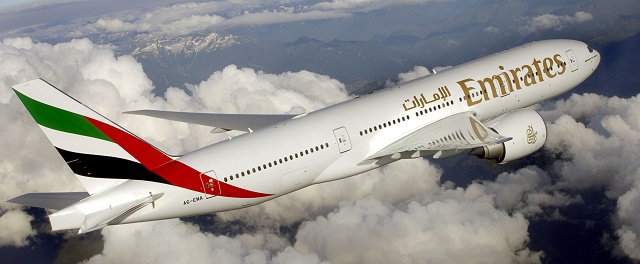The 40 Emirates Boeing 787-10s ordered at this year's Dubai air show will provide the airline with an important new network-development tool when they enter service from 2022.
The Dubai carrier's decision to order the largest Dreamliner revives plans to operate a large fleet of sub-350-seaters that were suspended with the cancellation of its A350 order in 2014.
"We see the 787 as a great complement to our 777 and A380 fleet, providing us with more flexibility to serve a range of destinations as we develop our global route network," says Emirates chairman Sheikh Ahmed bin Saeed Al Maktoum.
The termination of the order for 50 A350-900s and 20 -1000s left nothing smaller than the 777-300ER on backlog – an aircraft that seats 354-428 passengers in Emirates' various configurations. The shift to higher seat-counts became more acute in 2016 when the last of its legacy fleet of A330-200s, A340-300s/500s and 777-200ERs retired. These aircraft seated between 237 and 274 passengers, and their departure left the small sub-fleet of 10 ultra-long-range 266-seat 777-200LRs as the only sub-350-seaters in service.

The 10 777-200LRs are the only sub-350-seaters that Emirates currently operates
Emirates
Almost immediately after cancelling its A350 order, Emirates reignited a mid-size widebody evaluation which pitched the A350 against the 787-9/10. Announcing the 787-10 selection, Al Maktoum described the Dreamliner as "the best option", stressing that Emirates' analysis did not focus simply on price.

Emirates says its 787-10s will operate a mix of two- and three-class configurations, seating "between 240 and 330 passengers", and the airline has the right to switch the order to the smaller 787-9 variant. This offers "additional flexibility for its future fleet and global network", says Emirates. That it highlights the option to switch is significant, as a move to the smaller 787 variant would indicate a return to the strategy of operating lower-capacity widebodies last pursued with its A330-200s.
When talking to FlightGlobal about the new competition back in 2014, Emirates Airline president Tim Clark described the 787-10 as a "10h-capable" aircraft, and indicated a requirement for a widebody able to serve medium-range sectors from Dubai where the focus was on good economics rather than ultimate payload/range performance.
However at the time, Clark raised concerns that Dubai's harsh operating environment would prevent the 787-10 as then proposed from being able to carry sufficient payload on critical missions. "The engines are spec'd at 70-72 [thousand pounds thrust], but the conditions we're getting [operating from Dubai means] it can't take the payload," said Clark in 2014.
Crucially, Emirates is yet to announce its selection between GE Aviation and Rolls-Royce to power its 787s. How Boeing and the engine manufacturers are proposing to tackle these concerns is not clear, but Emirates' decision to place a $15.1 billion commitment at Dubai indicates that Clark is satisfied now that solutions have been identified.
For all the coverage from the Dubai air show visit our dedicated event page
Source: Cirium Dashboard


























